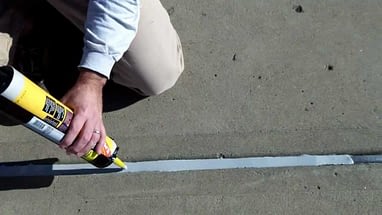Joint sealing is a critical process in construction and home maintenance, preventing water damage, structural issues, and energy loss. At Simseal, we specialise in high-performance silicone sealants designed for durability and long-lasting protection. In this guide, we’ll explore the key benefits of joint sealing, why silicone sealant is the best choice, and how to apply it effectively—whether for DIY projects or professional use.
Why is Joint Sealing Important?
Proper joint sealing ensures structural integrity by preventing cracks, leaks, and other long-term damage. Here’s why it matters:
1. Prevents Water Infiltration & Structural Damage
- Joint sealants block surface water and debris from entering gaps, reducing the risk of concrete erosion, mould growth, and foundation weakening.
- Without sealing, water seepage can lead to costly repairs in buildings, bridges, and pavements.
2. Keeps Pests & Insects Out
- Gaps in walls, windows, and roofs can invite ants, cockroaches, and termites.
- A high-quality silicone sealant like Simseal SS100 creates a flexible, airtight barrier that deters infestations.
3. Improves Energy Efficiency
- Sealed joints reduce heat loss in winter and keep cool air inside during summer, lowering energy bills.
- This is especially important for Australian homes facing extreme temperatures.
Why Choose Silicone Sealant for Joint Sealing?
Silicone sealants outperform traditional options (like acrylic or polyurethane) due to their:
- Superior Flexibility – Moves with building materials without cracking.
- Waterproof & Weatherproof – Resists UV rays, rain, and humidity.
- Chemical & Temperature Resistance – Handles harsh cleaning agents and extreme heat/cold.
- Versatility – Ideal for bathrooms, kitchens, windows, roofs, and construction joints.
Best Silicone Sealant in Australia: Simseal SS100
Our SS100 100% Premium Neutral Cure Sanitary Sealant is:
- Mould-resistant – Perfect for wet areas.
- Non-yellowing – Maintains a clean finish.
- Easy to apply – Smooth, professional results every time.
Shop Simseal SS100 Now | Contact Our Experts
How to Apply Silicone Sealant (Step-by-Step Guide)
For small DIY projects, follow these steps:
- Prepare the Surface – Clean and dry the area; remove old sealant.
- Load the Sealant Gun – Insert the tube, cut the nozzle, and test on scrap material.
- Apply Smoothly – Hold at a 45° angle for even coverage.
- Tool for a Professional Finish – Use a sealant smoother or wet finger.
- Let It Cure – Drying time varies (check product instructions).
When to Hire a Professional
For large-scale or complex projects (e.g., commercial buildings, industrial joints), it’s best to consult a professional sealant applicator. Simseal works with certified contractors—get a quote today.
Final Thoughts
Joint sealing is essential for protecting structures, improving energy efficiency, and preventing pests. For the best results, always use a premium silicone sealant like Simseal SS100, designed for Australian conditions.
Need Help Choosing the Right Sealant?
✅ DIYers – Browse our silicone sealant range
✅ Professionals – Contact Simseal for bulk orders & expert advice


Recent Comments